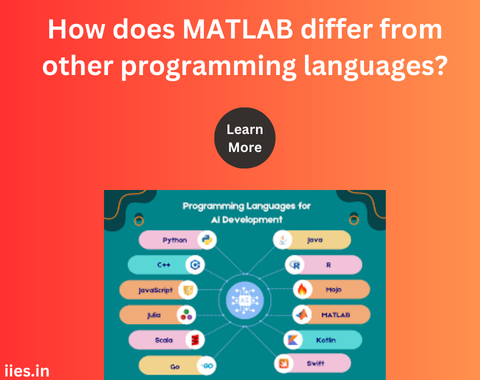
MATLAB (short for Matrix Laboratory) is a high-level programming language and interactive environment widely used for numerical computation, visualization, and programming. Developed by MathWorks, MATLAB is especially popular in engineering, scientific research, and academic settings. While it shares some similarities with other programming languages, several key differences set it apart. This article explores these distinctions, focusing on MATLAB’s unique features, typical use cases, and how it contrasts with languages like Python, C++, and Java.
One of the primary features of MATLAB is its specialization in numerical and matrix computations. Unlike general-purpose programming languages such as Python, C++, or Java, MATLAB is specifically designed to work with matrices and arrays. This focus allows for concise and readable code when dealing with linear algebra operations, signal processing, and other numerical tasks.
MATLAB comes with a fully integrated development environment (IDE) that includes tools for code editing, debugging, and visualization. This built-in IDE is designed to streamline the workflow for scientific and engineering applications, providing features such as:
While other languages like Python and Java can be used with various IDEs (e.g., PyCharm, Visual Studio Code, Eclipse), MATLAB’s environment is tailored to its user base, offering specialized tools for matrix manipulation, data visualization, and algorithm development.
MATLAB provides an extensive range of toolboxes—add-on collections of specialized functions that extend MATLAB’s capabilities for specific applications. These toolboxes cover areas such as signal processing, control systems, neural networks, and machine learning. This makes MATLAB a powerful tool for domain-specific applications without requiring the user to integrate external libraries manually.
For example, the Signal Processing Toolbox provides functions for analyzing and visualizing signals, which would require a combination of multiple libraries in Python or other languages.
MATLAB is often praised for its ease of use, particularly for those with limited programming experience. Its syntax is designed to be intuitive and similar to mathematical notation, making it accessible for engineers and scientists who may not have formal computer science training.
MATLAB is optimized for matrix and vector operations, often leading to faster execution for these types of computations compared to general-purpose languages. However, for more general or non-numeric programming tasks, languages like C++ or Java may offer better performance.
Additionally, MATLAB’s interpreted nature can lead to slower execution times for scripts compared to compiled languages. To address this, MATLAB provides options for compiling code and integrating with languages like C/C++ for performance-critical applications.
One significant difference between MATLAB and many other programming languages is its licensing model. MATLAB is a proprietary software that requires a paid license for use. This can be a barrier for individual users or small organizations, especially when compared to free and open-source languages like Python, which offer similar capabilities through community-contributed libraries.
MATLAB has a strong presence in academia and industry, particularly in engineering disciplines. This has led to a robust ecosystem of user-contributed files, tutorials, and forums. However, the overall community size is smaller compared to more general-purpose languages like Python, which benefits from a vast and diverse user base contributing to a wide range of libraries and frameworks.
MATLAB is a powerful tool for numerical computation, data analysis, and algorithm development, particularly suited for applications in engineering and science. Its ease of use, specialized toolboxes, and integrated environment make it a preferred choice for many researchers and engineers. However, the proprietary nature and cost of MATLAB, along with its specialized focus, differentiate it significantly from general-purpose programming languages like Python, C++, and Java. Understanding these differences can help users choose the right tool for their specific needs and applications.
Indian Institute of Embedded Systems – IIES